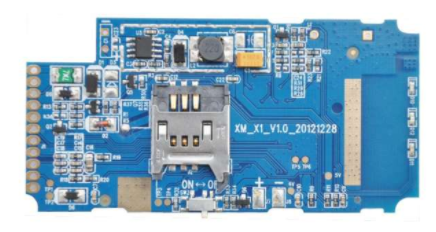The composition of SMT solder paste
Solder paste, as the name suggests, is a paste-like object, which is very similar in shape to the toothpaste we use every day. The main component of solder paste is a combination of tin powder and flux.
If the ratio of solder paste is calculated by weight, the ratio of tin powder to flux is about 90%:10%; because tin powder is heavier; if the ratio is calculated by volume, the ratio of tin powder to flux is about 50%:50 %;
The role of solder paste in SMT patches
Solder paste is an important material indispensable for the advancement of electronic technology.

It is used to solder electronic parts on circuit boards. Because the invention of solder paste promotes the miniaturization of electronic assembly technology, PCBA circuit boards continue to become smaller, IC The continuous reduction of components has made the mobile phones we use more and more miniaturized. From the previous big brother to the current smart phone, the appearance is getting more and more beautiful, and the smaller the size, the more and more functions are.
Extended reading: How does the SMT chip processing solder paste printer print the solder paste on the PCB circuit board?
The solder paste is coated on the PCB. Before soldering, the solder paste sticks to the electronic parts placed on the surface of the circuit board, so that the parts will not deviate under the slight vibration. The biggest function is to solder the electronic parts. The circuit board achieves the purpose of electronic communication.
Types of solder paste
According to environmental protection requirements, it can be divided into lead-tin du paste and lead-free solder paste (environmental-friendly solder paste):
The environmentally friendly solder paste contains only a small amount of lead, which is harmful to humans. Among the electronic products exported to Europe and the United States, the lead content is strictly required. Therefore, lead-free processes are used in SMT chip processing
In the lead-free SMT chip processing process, it is more difficult to tin with the lead process, especially in the case of BGAQPN, etc., it will use a high proportion of silver solder paste. The common ones on the market are silver with 3 points and 0.3 Point of silver. Among the solder pastes, silver-containing solder paste is currently the more expensive one.
According to the melting point, there are three types: high temperature, medium temperature and low temperature:
The commonly used high temperature is tin silver copper 305,0307. There are tin-bismuth-silver at medium temperature, and tin-bismuth is commonly used at low temperature, which can be selected according to different product characteristics in SMT chip processing.
According to the fineness of tin powder, it is divided into No. 3 powder, No. 4 powder, No. 5 powder and solder paste:
Selection: In the SMT chip processing of generally larger components (1206 0805 LED lights), No. 3 powder solder paste is used because its price is relatively cheap.
There are dense-foot ICs in digital products, and No. 4 powder solder paste is used in SMT chip processing.
When encountering very precise soldering components such as BGA, and demanding products such as mobile phones, tablets, and SMT chip processing, No. 5 powder solder paste will be used.
Storage and use environment of solder paste in SMT patch
1. After receiving the solder paste, please put it in the refrigerator immediately and store it in a refrigerator at 3-7°C. Be careful not to freeze the solder paste.
2. Preparation before solder paste printing: Take the solder paste out of the refrigerator and perform the following 2 steps before putting it into the printing process:
Do not open the package, and leave it at room temperature for at least 4-6 hours to allow the temperature of the solder paste to rise to room temperature naturally.
After the temperature of the solder paste reaches room temperature, it must be stirred before being put into printing to ensure that the components in the solder paste are evenly distributed. It is recommended to use special mixing equipment, mixing in the same direction for 1-3 minutes.